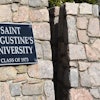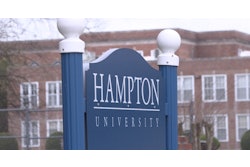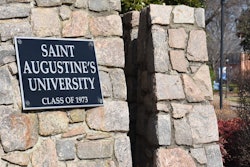WASHINGTON, D.C.
In a development that is expected to bring the
latest and most advanced information technology to the campuses of
historically Black colleges and universities (HBCUs), an Atlanta-based
technology company and the National Association for Equal Opportunity
in Higher Education (NAFEO) have formed an alliance to make it easier
for the schools to acquire technology.
WANLink Communications, a subsidiary of the Black-owned World
African Network company, entered into a partnership with NAFEO in March
that could help win the Atlanta firm technology contracts valued at
from $6 million to $8 million by the end of the year. WANLink’s
agreement with NAFEO includes donation of new computer hardware and
software, and the installation of a local area network at the
organization’s new headquarters in Silver Spring, Maryland. The
partnership could enable WANLink Communications to become the HBCU
community’s most active information technology player as schools
construct and upgrade their communication and computer systems.
Dr. Henry Ponder, NAFEO president and CEO, said the organization is
“pleased to work with WANLink to help facilitate HBCUs’ technology
gains. Now that technology has become the key to the global economy, it
is more important than ever for all educational institutions to take
full advantage of its benefits.” Technology was a hot topic at several
of the sessions conducted at this year’s annual NAFEO conference, held
here last month.
Warren Williams, president of WANLink Communications, said the
NAFEO partnership allows his company to market information technology
products and services directly to top officials at the 116 institutions
represented, by NAFEO.
WANLink specializes in constructing the infrastructure for
telephone systems, data networks, and video/cable TV systems. Specific
products and services provided by WANLink include cable design and
installation, telephone switching system development, distance learning
network setup, digital interactive video system installation, and data
network management.
“We build the foundation” for schools to utilize computer and communication networks, Williams said.
“It is important for students, faculty, and administration alike to
share in a network of services that enable them to take advantage of a
full range of communications technology, from an integrated e-mail
system and long distance learning to online registration and
videoconferencing,” he said.
WANLink is one of several companies that, over the past few years,
has sought to work with NAFEO on information technology, according to
Keith Hodges, NAFEO director of development. Hodges added that WANLink
offered a deal that surpassed previous proposals.
In March, WANLink installed ten computers at NAFEO headquarters.
Installation of the local area network, which will enable NAFEO
employees to have Internet access, is expected to be complete by the
end of the month.
The NAFEO agreement also will lead to the establishment of the HBCU
Technology Advisory Committee (HTAC) as a Policy development group.
HTAC will be comprised of five HBCU presidents, Ponder, and Williams.
The group is expected to meet at least three times a year to shape
information technology policy and initiatives for the HBCU community.
This month, WANLink hopes to land summer contracts with several
HBCUs around the South. Williams says the summer months represent a
critical time for winning contracts and completing campus construction
and technology projects.
WANLink was established in 1997 as a joint venture company between
the World African Network (WAN) organization and Campuslink
Communications Systems. WANLink pulls together the expertise of the
World African Network — a communications company with broad experience
in broadcast, cellular, Internet, and other emerging technologies —
and Campuslink — an Ann Arbor, Michigan-based company specializing in
customized communications systems and services for higher education
institutions. Campuslink is providing communications services to
thirty-nine institutions.
Sterlin Adams, director of university planning and analysis at
Florida A&M University in Tallahassee, says FAMU officials have met
with WANLink executives and they are actively discussing potential
projects at the Florida campus. He says the company, based on its
alliances with other companies and its expertise, appears to have the
resources “to be a player in this arena.”
“Among companies that are serving as technology integrators in the
higher education market, they seem to be about as strong as any other,”
Adams said.
He added that the idea of getting HBCUs to work together on information technology initiatives is a valid one.
“I think that activity has merit even with the diversity of
resources on respective campuses. In looking at HBCUs, there’s value in
having them jointly plan and move towards goals for technology.”
COPYRIGHT 1998 Cox, Matthews & Associates
© Copyright 2005 by DiverseEducation.com















